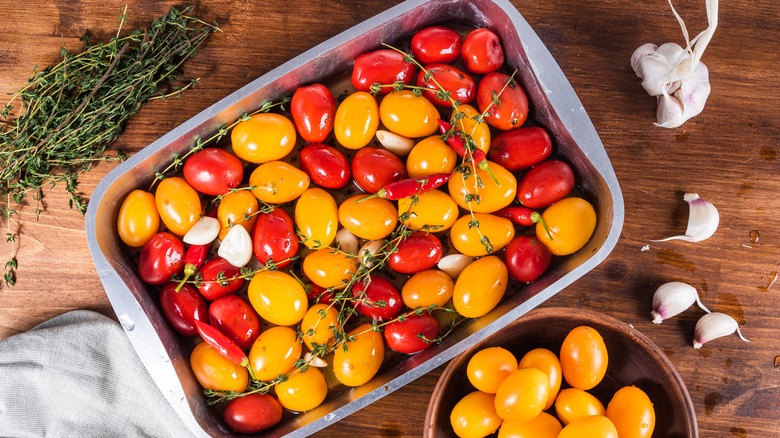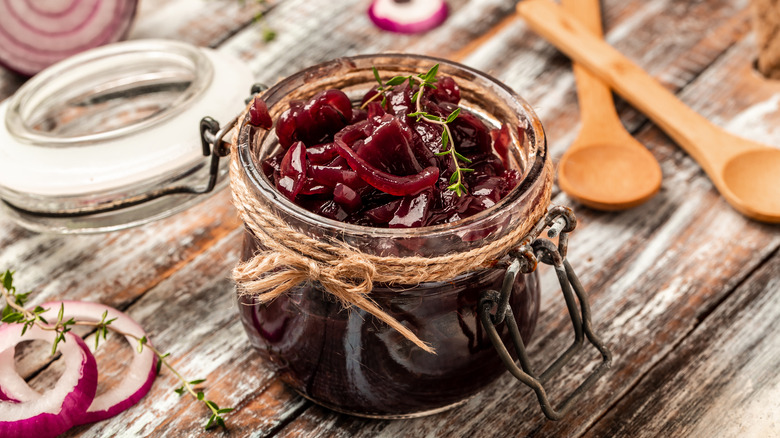You Should Start Cooking Fruits And Vegetables Confit
You've probably heard of duck confit, a traditional method of French cooking that turns a duck leg into a work of culinary art. But did you know you can confit fruit and vegetables, too?
While French traditionalists may turn their nose up at confiting anything but meat, Epicurious says that cooks from Molly Baz to Samin Nosrat are obsessed with cooking veg via the confit method. They smother veggies like eggplant, green beans, or cherry tomatoes with olive oil poured with a heavy hand. Adding aromatics — think garlic, chiles, currants, or basil — further enhances the flavor. Then, cook it low and slow, no more than 200 F, says Serious Eats.
Fruit confit forgoes fat for sugar syrup. While Food52 explains that a true fruit confit requires the fruit to be dried first, you can make a quick version by cooking it slowly in the sweet syrup. Adding spices and wine during the process creates more depth of flavor. While they sound similar, confit, with its low and slow method, takes longer to cook than a compote, which is cooked much quicker. Foodiosity points out compote is similar to canned fruit, while jams and jellies are a form of confit.
Enhance the flavor of fruit and veg via confit
Coming from the French word "confire," which means to preserve, according to Food52, confit originated in Gascony in the southwest of France (via D'artagnan). After salt curing either duck or goose, the meat was cooked in a bath of fat over low heat. The fat served as an added preservation method. After cooking, the layer of fat that remained over the meat kept bacteria out. But it also served as a way to seal in deliciousness. Thomas Keller, writing for MasterClass, explains that the salt cure pulled the water in the meat out while the slow method of cooking filled those empty cells with fat, rendering it tender and more flavorful.
Apart from simplicity — What could be easier than tossing your veg in an oil bath before popping it in the oven? — confit not only preserves the food, but also imparts even more flavor during the cooking process. Like the moisture that is replaced with fat while curing, We're Smart explains that while cooking in the oil or syrup more water is cooked out of the vegetable or fruit and replaced with the fat or syrup, making the flavor even more intense.
Even though the cooking temp is low enough to avoid burning, overcooking can happen, so keep it under 12 hours to avoid a gelatinous goo (via MasterClass).

